The ultra-ambitious residential project in Denmark’s Ørestad region will meet all of the UN’s Sustainable Development Goals.
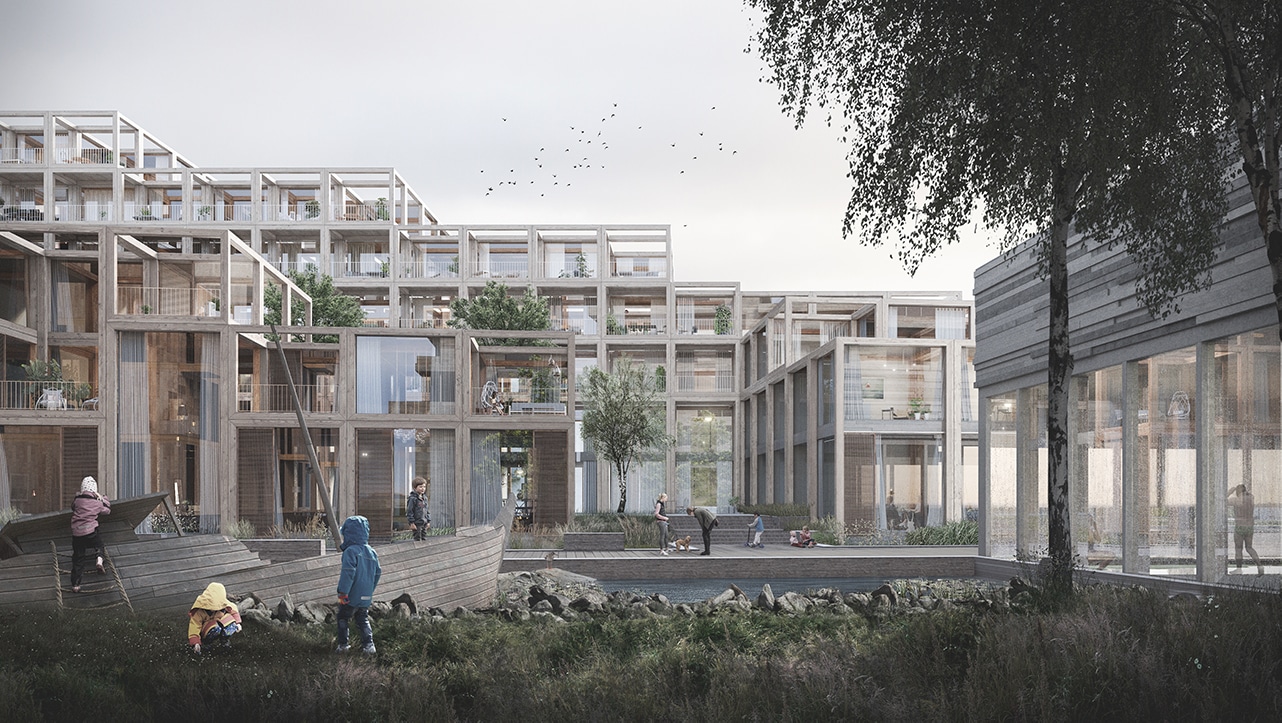
A courtyard view of the UN17 Village. [Rendering: TMRW]
PROJECT: UN17 Village LOCATION: Copenhagen SIZE: 377,000 square feet COMPLETION: 2023 ARCHITECT: Lendager Group ENGINEERS: MOE and Arup PROJECT TEAM: Jacob Blak, Sophie Daugaard Andersen, Majken Lynge Gribskjold, Kristian Knorr Jensen, Stephanie Levassor, Agata Marzec, Nicholas Ransome, Daniel Veenboer
It follows that one of the most wildly ambitious residential building projects in development is slated to rise in, well, one of the most wildly ambitious developing areas in Europe. As the project’s name suggests, the UN17 Village—which will cover 35,000 square meters and include 400 new homes—will be the first building development to specifically look to meet each of the UN’s 17 Sustainable Development Goals (SDGs) into its planning, construction, and maintenance. The village, which is being designed by Copenhagen-based Lendager Group, will take root in Denmark’s Ørestad region, a massive, formerly unused swath of island land that, over a 25-year period of fits and starts, has slowly been transformed into a genuine city district.
The village will be built from upcycled concrete, wood, and window glass; incorporate geothermal heating, rooftop gardens on each unit, a greenhouse, and rainwater collection systems; and boast 3,000 square meters of shared public space. Added all up, the result will be, according to Lendager, no less than “the world’s most sustainable building project.”
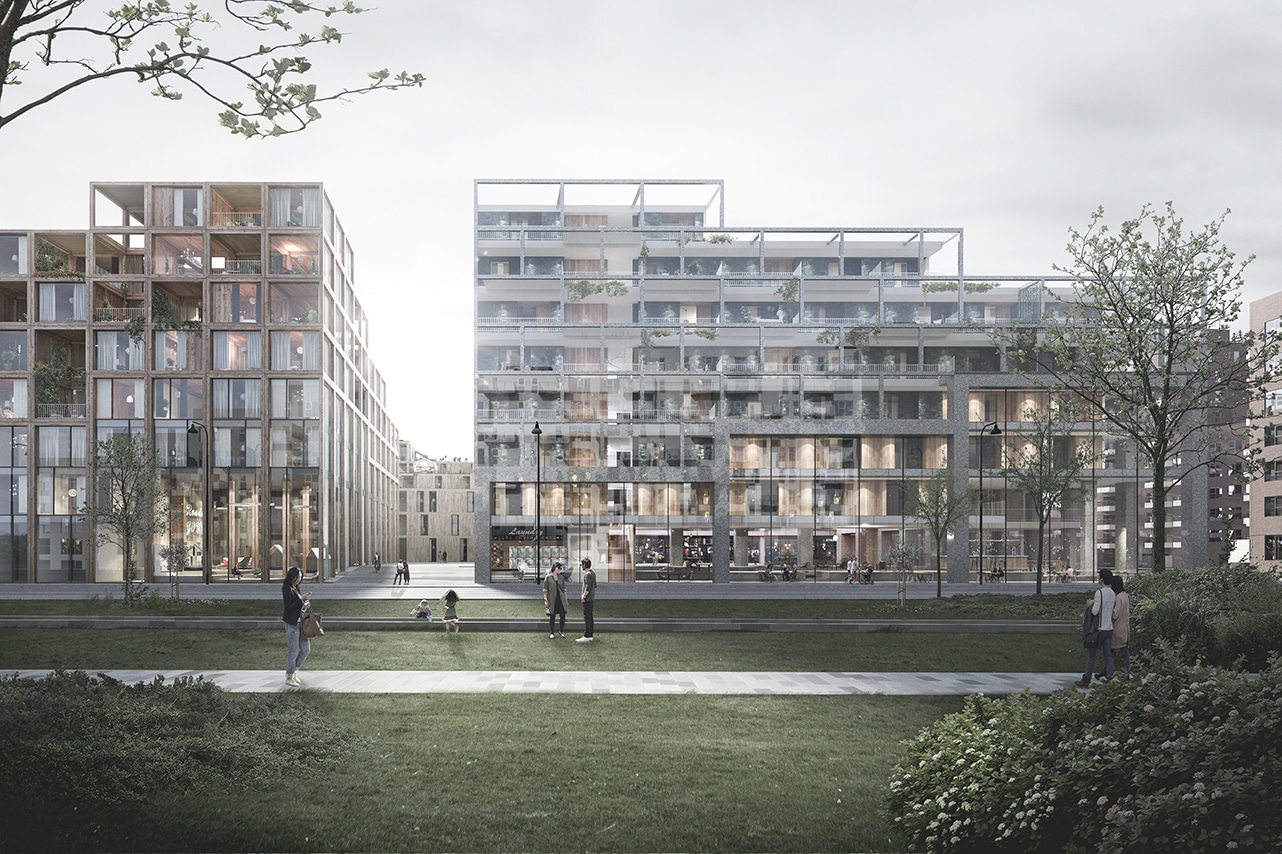
The project addresses all 17 of the UN’s Sustainable Development Goals. They include No Poverty, Zero Hunger, Gender Equality, and Reduced Inequality. [Rendering: TMRW]
But “ambitious” only partially describes the project. “Holistic” might be a better way to understand it. The 17 goals, outlined and adopted by the UN in 2015, make no bones about the sheer scale of their altruistic aim. They include No Poverty, Zero Hunger, Gender Equality, and Reduced Inequality—tough goals for a global policymaking body, much less an architect. But Anders Lendager and his namesake firm—which notably won the competition to build UN17 over some major architectural heavyweights, including Henning Larsen—have plans that seem as practical as their targets are lofty.
For instance, in tackling the No Poverty goal, Lendager aims to create 100 unskilled jobs for marginalized people, with employment during construction, materials-building, and—after completion—within various occupational sites in the village. “Architecture cannot lift people out of poverty, but the built environment can affect the impact of poverty on people’s life,” Lendager says.
The project will have 37 housing typologies, the variety of which is intended to foster a sense of inclusion and diversity. Lendager says the firm will pressure clients to welcome more women to the table during development and especially during construction phases—pushes to comply with SDG #5, to “achieve gender equality and empower all women and girls.” “To support a movement toward gender equality, the design of buildings, the construction phase, the settlements and urban areas must be inclusive to all citizens regardless of gender,” he says.
When the grand social and sustainability objectives that underpin UN17 actually manifest as a real-life village, they’ll do so in an Ørestad region that has at once become a hub for architectural innovation—some of it downright dazzlingly postmodern—ensconced in natural beauty and a magnet for controversy in Copenhagen about how best to ethically develop such environmental splendor. Given Lendager’s approach and assurances—not to mention a demonstrable history of large-scale upcycling—the firm appears well-positioned to thread such an ambitious needle.
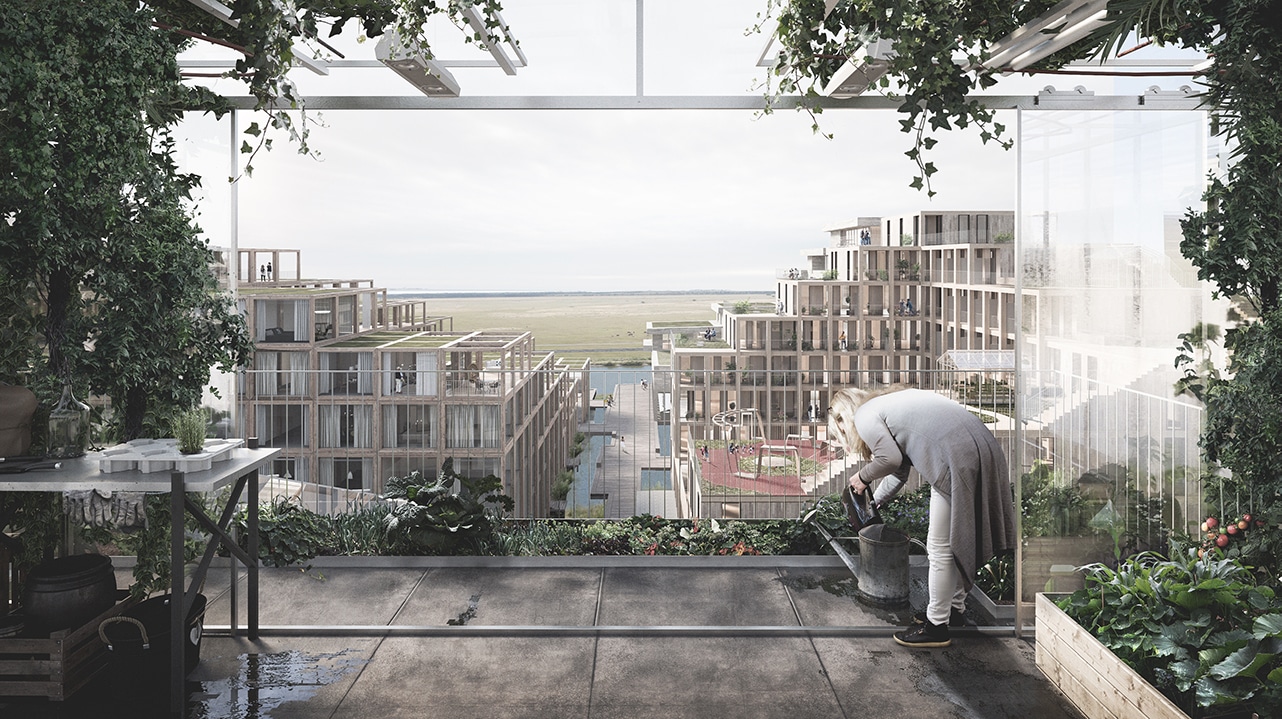
Balconies include garden areas, addressing the UN Sustainable Development Goal that urges “sustainable use of terrestrial ecosystems.” [Rendering: TMRW]
Biodiversity
The sprawling Ørestad development area sits atop former wetlands, so it’s imperative that any new construction supports the area’s natural biodiversity. The UN17’s expansive green areas will foster the same natural flora and fauna native to the area, and Lendager Group has pledged to introduce up to 350% more natural components into its design in comparison to nearby residential and commercial sites. Balconies with outdoor kitchens and garden areas look to promote a sense of city-nature harmony as well. The aim is to address the UN Sustainable Development Goal that urges “sustainable use of terrestrial ecosystems.”
Geothermal Heat
A vertical drilling rig—some 200 meters deep—will provide the bedrock for UN17’s energy-mitigating geothermal heating and cooling and help tackle SDG #7, which calls for Affordable and Clean Energy. Solar panels will also help capture energy. One cluster of buildings within the village will generate more energy than necessary for its immediate requirements, but that energy will be strategically distributed throughout the complex. “Focusing on universal access to energy, increased energy efficiency, and the increased use of renewable energy is crucial to create resilience to environmental issues like climate change,” Lendager says.
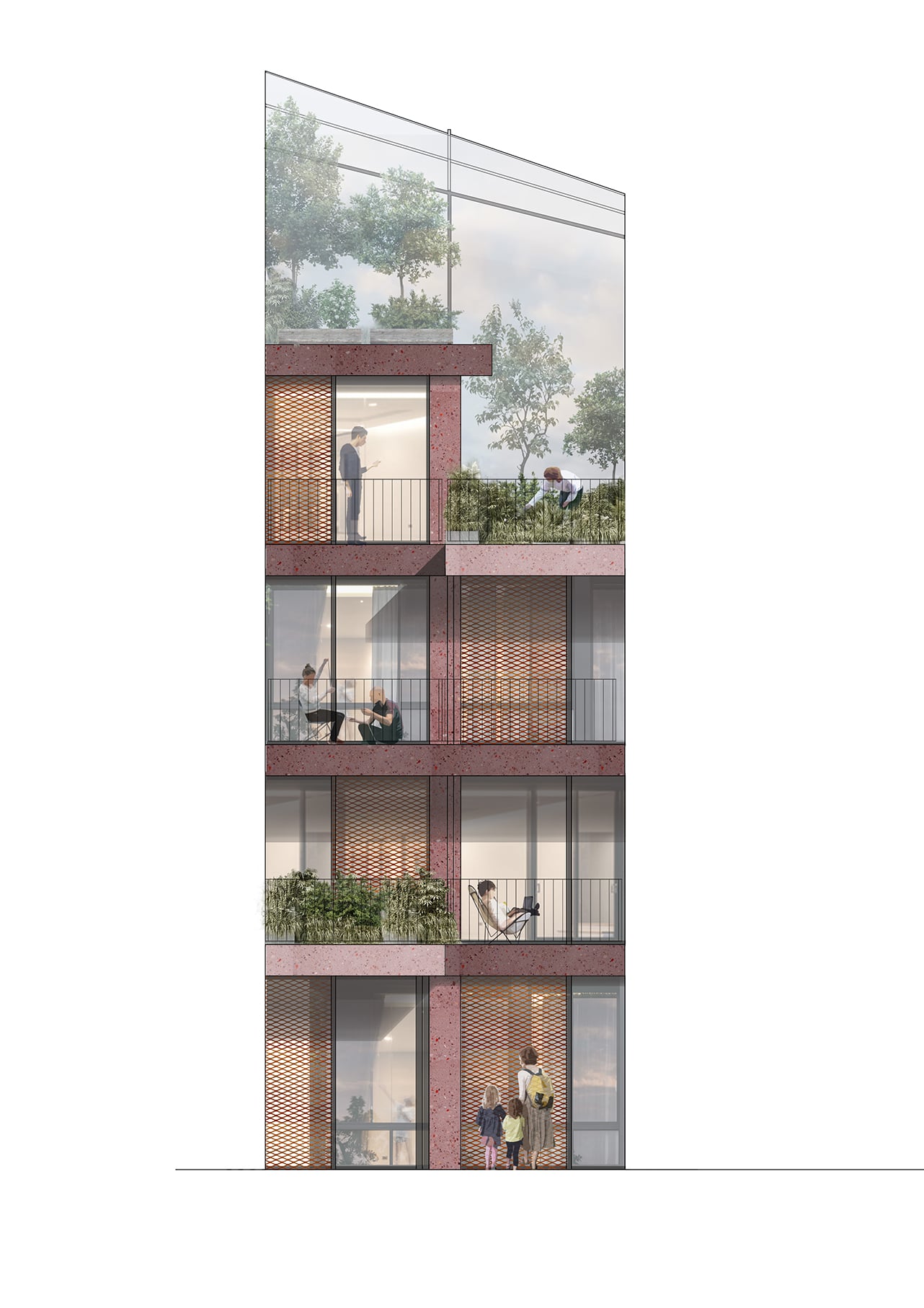
[Rendering: TMRW]
Innovative Waterworks
In addressing the UN’s call for Clean Water And Sanitation (SDG #6), runoff rainwater will be treated and re-circulated through the complex, including the village’s laundry facilities, which will also use wastewater in restrooms. Water used in swimming areas within UN17 will have been locally cleaned through onsite biosystems and reused, and water for cleaning and cooking will be heated and cooled using the village’s geothermic process.
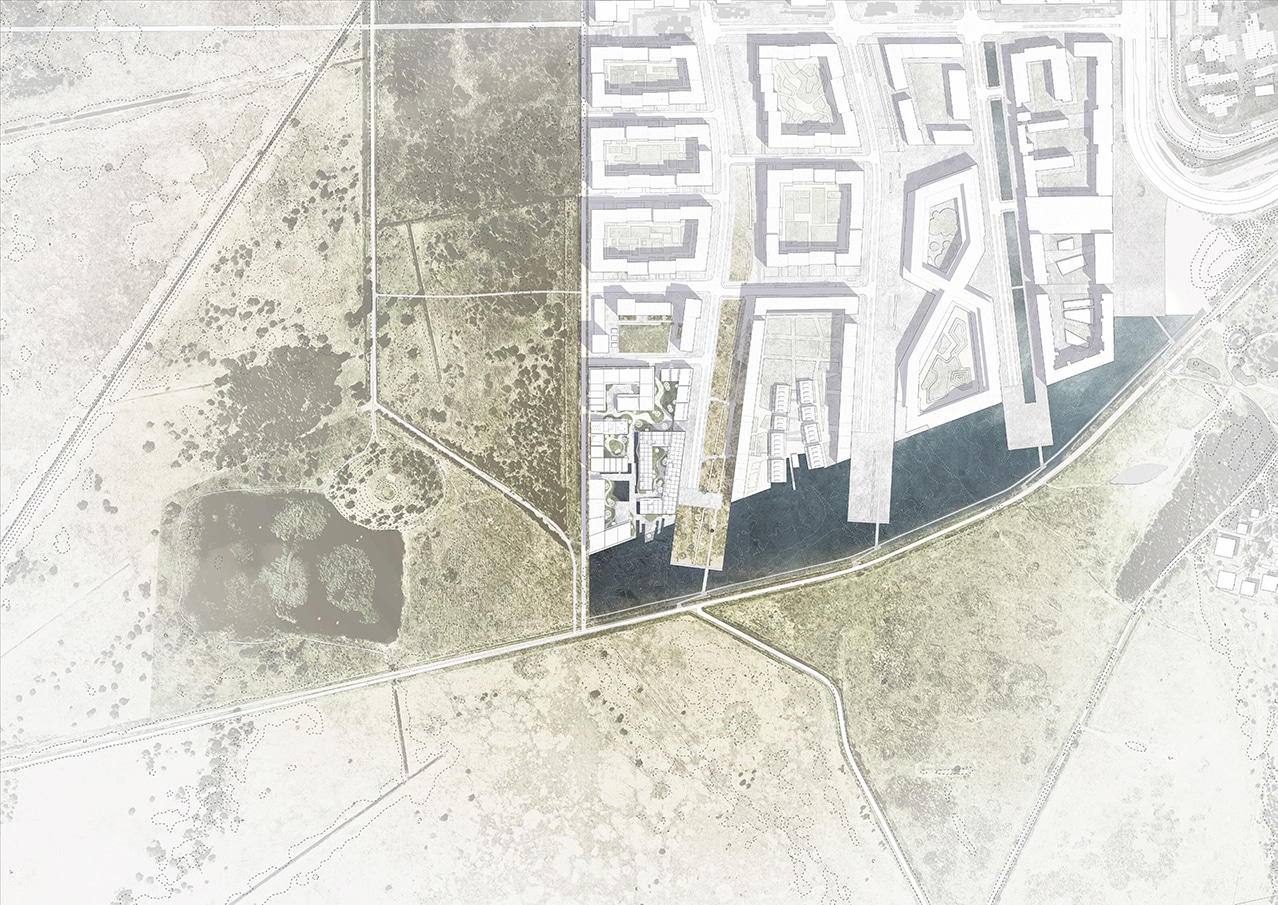
Site Plan [Courtesy of Lendager Architects]
Sustainable and Hyperlocal Food
Greenhouses and rooftop gardens in UN17 will grow organic food that will be directly supplied to a restaurant onsite. (The goal is to grow enough to serve 30,000 meals each year.) Any leftovers from the restaurant will be allocated to the needy free of charge. The fact that meals will be locally grown will also cut the cost and emissions generated by traditional food transportation, all while helping Lendager Group tackle the Zero Hunger SDG.
